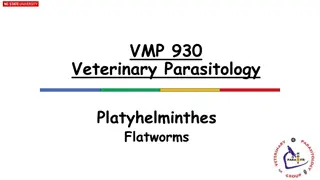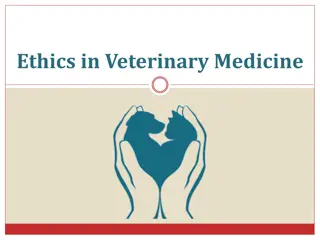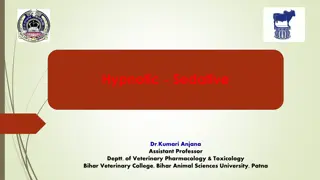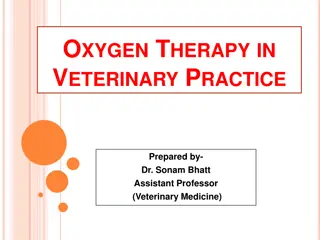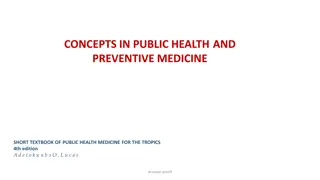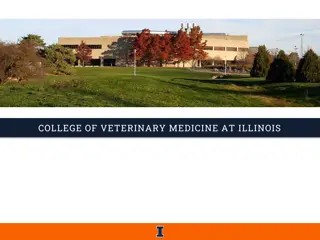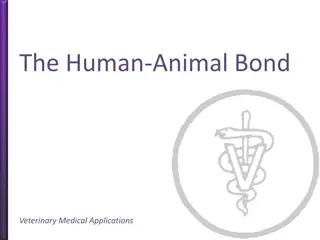Understanding Oedema in Veterinary Medicine
Oedema is the abnormal accumulation of fluid in tissues and cavities, often caused by factors like decreased plasma oncotic pressure, increased hydrostatic pressure, increased capillary permeability, or lymphatic flow obstruction. This article explores the etiology, pathophysiology, and clinical signs of oedema in animals, emphasizing its impact on different species and associated conditions like anasarca and ascites.
Uploaded on Sep 15, 2024 | 0 Views
Download Presentation

Please find below an Image/Link to download the presentation.
The content on the website is provided AS IS for your information and personal use only. It may not be sold, licensed, or shared on other websites without obtaining consent from the author. Download presentation by click this link. If you encounter any issues during the download, it is possible that the publisher has removed the file from their server.
E N D
Presentation Transcript
OEDEMA By : Dr Sonam Bhatt Asstt Professor Veterinary Medicine UNIT-1
Abnormal or excessive accumulation of fluid in the interstitial tissue spaces and serous cavities.
ETIOLOGY Decreased plasma oncotic pressure Increased hydrostatic pressure Increased capillary permeability Obstruction to lymphatic flow.
Decreased plasma oncotic pressure 1. Hypoalbuminemia or hypoproteinemia Most common cause of generalized symmetric edema 2. Increased hydrostatic pressure in capillaries and veins caused by chronic (congestive) heart failure or obstruction to venous return symmetric pulmonary edema in acute heart failure
3. Increased capillary permeability Endotoxemia Part of the allergic response Vasculitis Damage to the vascular endothelium 4. Obstruction to lymphatic flow Tumors or inflammatory swelling Congenital in inherited lynphatic obstruction edema in Ayrshire and Hereford calves
CLINICAL SIGNS Accumulation of edematous transudate in subcutaneous tissues anasarca peritoneal cavity - ascites pleural cavities - hydrothorax pericardial sac - hydropericardium
Anasarca in large animals is usually confined to the ventral wall of the abdomen and thorax, the brisket Edema of the limbs is uncommon in cattle, sheep, & pigs but is quite common in horses when the venous return is obstructed or there is a lack of muscular movement Local edema of the head in the horse is a common lesion in African horse sickness and purpura hemorrhagica
Edematous swellings are soft, painless, and cool to the touch and pit on pressure. In ascites there is distension of the abdomen & fluid can be detected by a fluid thrill on tactile percussion, fluid sounds on succussion, & by paracentesis In pleural cavities and pericardial sac- restriction of cardiac movements, embarrassment of respiration, and collapse of the ventral parts of the lungs
Muffled heart & respiratory sounds Presence of fluid may be ascertained by percussion and thoracocentesis or pericardiocentesis Pulmonary edema is accompanied by respiratory distress; outpouring of froth from the nose Cerebral edema- severe nervous signs of altered mentation
Thrombophlebitis is a common cause of edema, localized particularly of the head in horses and cattle with thrombophlebitis of both jugular veins.
CLINICAL PATHOLOGY Cytologic examination of a sample of fluid ----- presence & absence of inflammatory cells Thoracocentesis or abdominocentesis --------- differentiation of fluid accumulation Conjunction with measurement of serum albumin concentration & mean central venous pressure
TREATMENT TREATMENT Correction of cause Hypoalbuminemia administration of colloids such as plasma or Dextran Parasitic gastroenteritis . appropriate anthelmintic Obstructive edema ..removal of the physical cause & increased permeability edema . resolution of the cause of endothelial damage
Ancillary nonspecific measures - restriction of the amount of salt in the diet and the use of diuretics Aspiration of edema fluid is rarely successful and is not routinely recommended but usually provides temporary relief because the fluid rapidly accumulates





